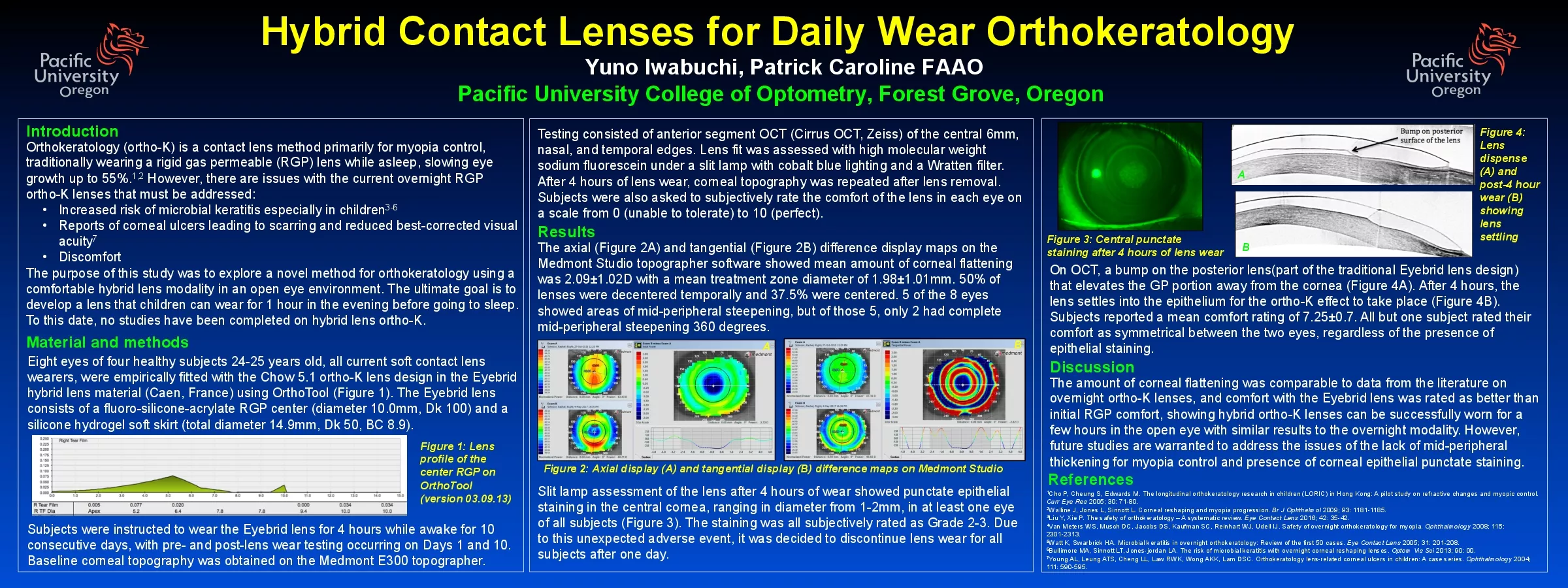

silicone hydrogel soft skirt total diameter 149mm Dk 50 BC 89 Testing consisted of anterior segment OCT Cirrus OCT Zeiss of the central 6mm nasal and temporal edges Lens fit was assessed with high ID: 860789
Download Pdf The PPT/PDF document "Increased risk of microbial keratitis es..." is the property of its rightful owner. Permission is granted to download and print the materials on this web site for personal, non-commercial use only, and to display it on your personal computer provided you do not modify the materials and that you retain all copyright notices contained in the materials. By downloading content from our website, you accept the terms of this agreement.
1 Increased risk of microbial keratitis es
Increased risk of microbial keratitis especially in children3-6 ¥!Reports of corneal ulcers leading to scarring and reduced best-corrected visual acuity7 ¥!Discomfort The purpose of this study was to explore a novel method for orthokeratology using a comfortable hybrid lens modality in an open eye environment. The ultimate goal is to develop a lens that children can wear for 1 hour in the evening before going to sleep. To this date, no studies have been completed on hybrid lens ortho-K. Introduction Eight eyes of four healthy subjects 24-25 years old, all current soft contact lens wearers, were empirically fitted with the Chow 5.1 ortho-K lens design in the Eyebrid hybrid lens material (Caen, France) using silicone hydrogel soft skirt (total diameter 14.9mm, Dk 50, BC 8.9). Testing consisted of anterior segment OCT (Cirrus OCT, Zeiss) of the central 6mm, nasal, and temporal edges. Lens fit was assessed with high molecular weight sodium fluorescein under a slit lamp with cobalt blue lighting and a Wratten filter. After 4 hours of lens wear, corneal topography was repeated after lens removal. Subjects reported a mean comfort rating of 7.25±0.7. All but one subject rated their comfort as symmetrical between the two eyes, regardless of the presence of epithelial staining. The amount of corneal flattening was comparable to data from the literature on overnight ortho-K lenses, and comfort with the Eyebrid lens was rated as better than initial RGP comfort, showing hybrid ortho-K lenses can be successfully worn for a few hours in the open eye with similar results to the overnight modality. However, future studies are warranted to address the issues of the lack of mid-peripheral thickening for myopia control and presence of corneal epithelial punctate staining. Discussion References 1Cho P, Cheung S, Edwards M. The longitudinal orthokeratology research in children (LORIC) in Hong Kong: A pilot study on refractive changes and myopic control. Curr Eye Res 2005; 30: 71-80. 2Walline J, Jones L, Sinnott L. Corneal reshaping and myopia progression. Br J Ophthalmol 2009; 93: 1181-1185. 3Liu Y, Xie P. The safety of orthokeratology Ð A systematic review. Eye Contact Lens 2016; 42: 35-42. 4Van Meters WS, Musch DC, Jacobs DS, Kaufman SC, Reinhart WJ, Udell IJ. Safety of overnight orthokeratology for myopia. Ophthalmology 2008; 115: 2301-2313. 5Watt K,